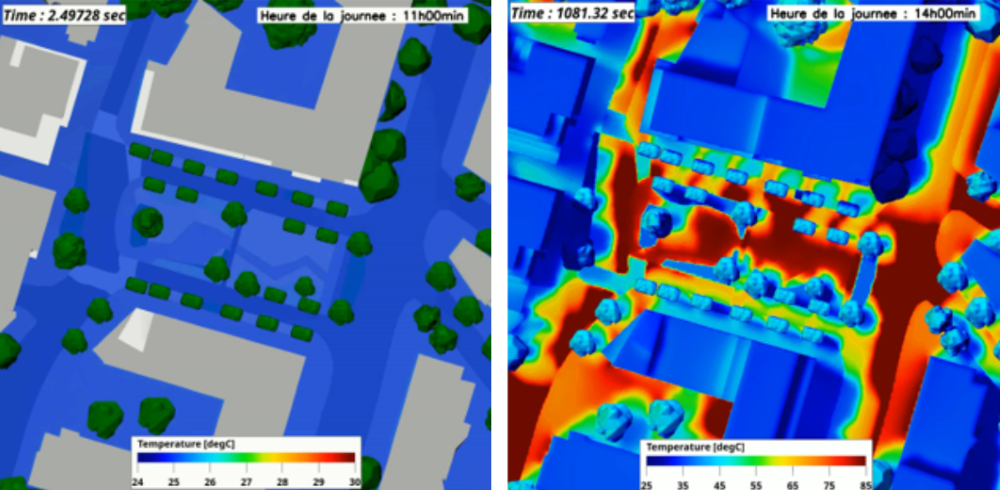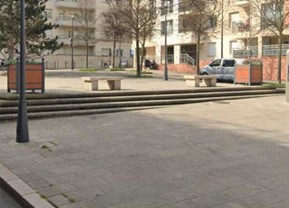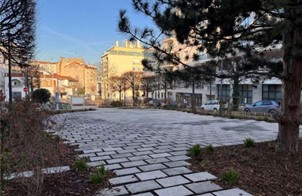The summer of 2025 has come to an end in the northern hemisphere and has set heat records. Europe has been hit by two severe heatwaves, leading to more than 2000 heat-related deaths, sparking wildfires and straining energy systems.
Western Europe saw its highest average temperature for that time of year in decades, with temperature rising over 40°C in certain places. These high temperatures were more pronounced in urban areas, where concrete and limited green spaces serve as amplifiers for the heat, creating microclimates, or “urban heat islands”.
Western Europe saw its highest average temperature for that time of year in decades, with temperature rising over 40°C in certain places. These high temperatures were more pronounced in urban areas, where concrete and limited green spaces serve as amplifiers for the heat, creating microclimates, or “urban heat islands.”
What is the urban heat island effect?
Let’s understand what the urban heat island effect is.
According to scientists, urban heat island effect occurs when urban areas are significantly warmer than rural surroundings, particularly at night, and is due to various factors (dense construction, buildings materials, low vegetation cover, limited airflow…).
Cities, can often register temperatures up to 4°C warmer than rural areas. In Europe, urban heat islands have been measured to be up to 15°C hotter on the surface than rural surroundings, especially in extreme hotspots.
These temperatures can negatively impact human lives by causing a number of health issues such as respiratory disorders or heat strokes, setting heatwaves among the deadliest climate related events, in particular for vulnerable groups.
This issue is of importance for city leaders due to its significant impact on public health and its potential to cause major disruptions on public infrastructures and on the economy. The European Environment Agency estimates climate and weather extremes to be the cause of €162 billion in economic losses, with heatwaves being responsible for 19% of it.
Using virtual twins to simulate heat waves in cities
Now let’s take a look at the French city of Meudon, located in the Paris region, which offers a compelling example of how cities and territories can leverage virtual twin technology with simulations to improve climate resilience. The medium size city unveiled a new green strategy, “Meudon 2040” with a goal to improve the comfort and life quality of residents.
Since 2019 and the launch of the program, a number of schoolyards, squares and paths were converted into green, permeable zones. Over 20 000m2 of spaces were re-naturalized and hundreds of new trees were planted.
In 2024, Meudon partnered with Dassault Systèmes to simulate climate scenarios using the Virtual Twin of three predefined areas in the city. The model allows the city to:
- Visualize how heat behaves in those spaces
- Test various greening and urban design solutions
- Identify the most effective strategies to reduce temperatures

By virtually visualizing and forecasting the impact of different solutions, Meudon can make science-based decisions to design cooler and more livable urban spaces. The simulations, that integrate the existing environment (buildings, trees, roads, air flows, sun exposition…), allowed, as an example, to analyze the impact of ground material modification on air temperature. Cement ground replaced by green soil served as a way to cool the temperature. Other mitigation scenarios and their impacts were analyzed to compare.


Meudon is only one example of Dassault Systèmes’ realizations on heat island simulations, illustrating the power of sustainable urban planning. Urban stakeholders are now equipped with a tool to visualize and guide their city’s transformations, by testing scenarios to decide of the best outcomes before investing resources. They also have the right tool to engage with citizens. With visual representations to explain decisions and show future changes, city officials can now easily communicate and involve residents in the life of their city. For Meudon, the communication aspect comes in the form of council meetings with city residents, where the 3D models and simulations results are presented and explained.
This project was elaborated within The Sustainability and Resilience Cockpit for Cities, an innovative service-based approach that empowers cities, regardless of size, to benefit from feasibility studies and simulate mitigation strategies in a virtual twin, to facilitate science-based decisions.
Now, the Virtual Twin becomes accessible, as a flexible service, giving cities fast actionable insights without heavy investments or complex implementation. This lighter approach allows more municipalities to quickly visualize and compare different scenarios to understand the impact of their decisions before acting.
Final thoughts
In the face of rising climate issues and growing urban challenges, Virtual Twin and feasibility studies are no longer seen as optional – they are becoming essential tools for future urban strategies. They enable not only the analysis of heat island mitigation but also the exploration of solutions for flood prevention, pollution reduction, mobility optimization, and urban planning. These tools, used across diverse projects, demonstrate that climate resilience cannot be achieved through isolated interventions, but through integrated strategies where design, technology, and communities align to shape more sustainable cities.
